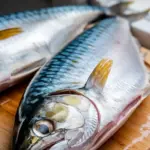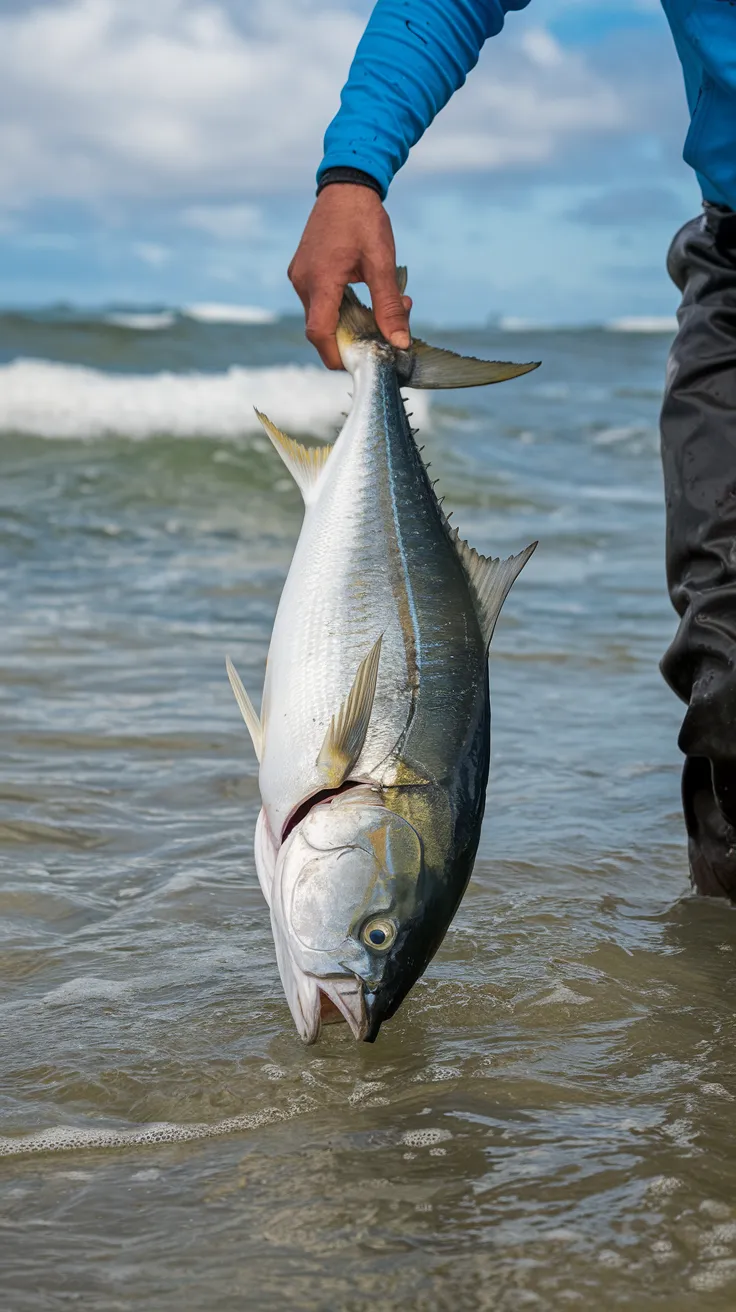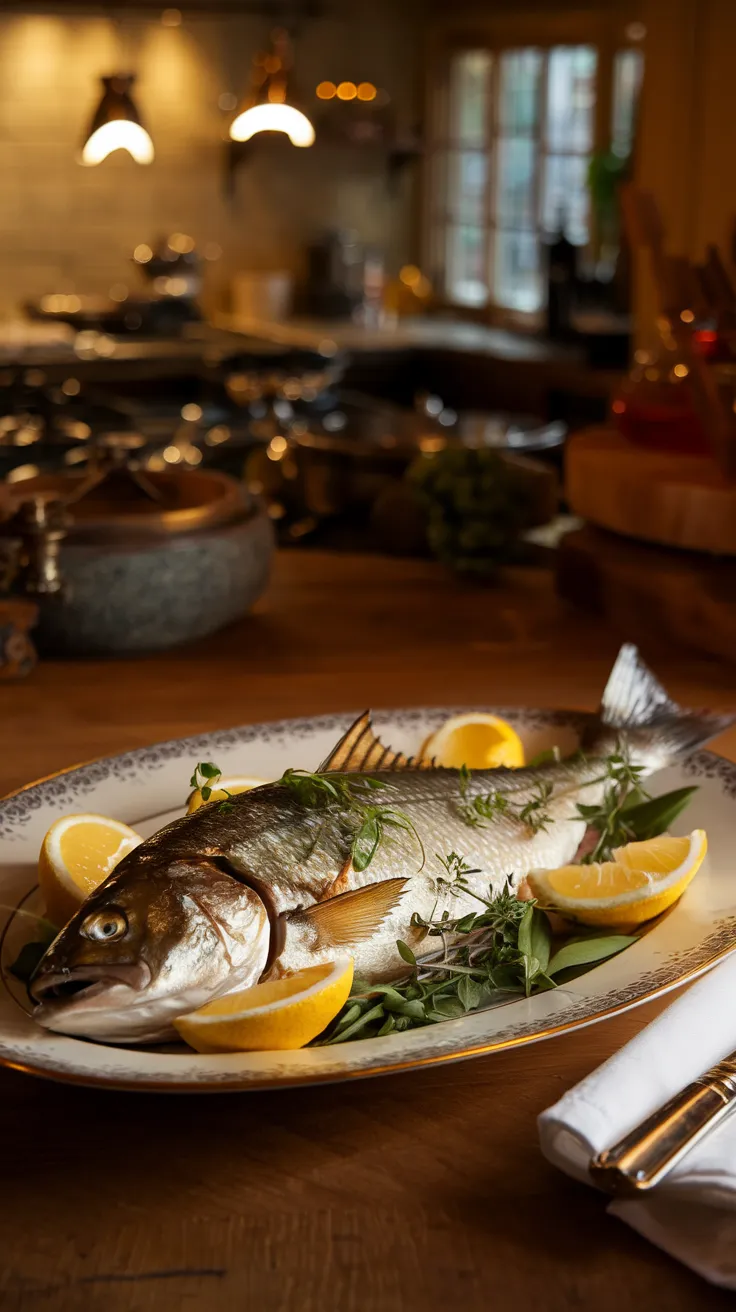Introduction to European Sea Bass
The European Sea Bass, known scientifically as Dicentrarchus labrax, is a popular game fish found in the eastern North Atlantic. This fish has drawn attention from both anglers and chefs alike due to its delicious flavor and firm texture. The European Sea Bass is typically found in coastal waters, estuaries, and river mouths, thriving in both salty and brackish environments.
This fish is easily recognizable with its elongated body and distinctive dark stripes along its silver sides. Additionally, they can grow up to 1 meter in length and weigh around 6 kilograms. Due to its popularity, overfishing has led to significant regulations to protect their populations and ensure sustainable fishing practices.
The taste of European Sea Bass is mild yet flavorful, making it a favorite on many restaurant menus. Furthermore, it can be prepared in various ways, including grilling, baking, and steaming, allowing chefs to explore numerous culinary possibilities.

Nutritional Value and Health Benefits
European Sea Bass is not only a delicious choice for many, but it also offers impressive nutritional benefits. Packed with high-quality protein, it supports muscle growth and repairs tissue. Furthermore, it contains essential fatty acids, including omega-3s, which promote heart health and reduce inflammation.
Additionally, this fish is a good source of vitamins, particularly vitamin B12, which is vital for nerve function and red blood cell formation. Other significant nutrients include selenium, which acts as an antioxidant, and phosphorus, important for bone health.
| Nutrient | Amount per 100g |
|---|---|
| Protein | 20g |
| Fat | 4g |
| Omega-3 Fatty Acids | 1.2g |
| Vitamin B12 | 2.4µg |
| Selenium | 30µg |
| Phosphorus | 200mg |
Incorporating European Sea Bass into your diet may also help in maintaining cognitive function, supporting eye health due to its vitamin A content.
Overall, enjoying this fish can contribute to a balanced diet, offering multiple health benefits that promote overall wellbeing.

Taste Profile and Texture of European Sea Bass
The European Sea Bass features a distinct taste profile that appeals to many seafood lovers. Its flesh is known for being firm yet tender, making it a favorite in various culinary dishes. The flavor is mild, with a subtle sweetness that pairs beautifully with a range of seasonings. Additionally, this fish has a flaky texture, which adds to its overall appeal when cooked.
Flavor Characteristics
When prepared correctly, the European Sea Bass offers an incredible eating experience. Here are some characteristics of its flavor:
- Delicate Flavor: The fish has a refined, mild taste that isn’t overpowering.
- Natural sweetness: Its subtle sweetness shines through, especially when grilled or roasted.
- Versatile pairing: It pairs well with various ingredients, enhancing its overall taste.
Texture Details
Another appealing feature of the European Sea Bass is its texture. The firm flesh holds up well during cooking, allowing for various preparation methods. Moist cooking techniques ensure the fish remains juicy, while dry methods add a delightful crispiness to the skin. Whether served as a fillet or whole, the texture offers a satisfying mouthfeel.
Overall, the European Sea Bass is an excellent choice for those looking to explore flavorful seafood options. Its versatility in cooking methods makes it suitable for many recipes, from simple grilling to sophisticated dishes. Enjoying this fish will undoubtedly enhance your culinary experience.

Culinary Uses and Popular Dishes: European Sea Bass
The European Sea Bass is renowned for its delicate flavor and flaky texture. This fish is an essential ingredient in numerous culinary traditions around the Mediterranean. Chefs often highlight its taste through various cooking methods, including grilling, baking, and pan-searing.
Sea Bass pairs beautifully with herbs like thyme and rosemary. Additionally, citrus flavors enhance its natural taste. Many recipes incorporate these elements to elevate the dish.
Popular Dishes Featuring European Sea Bass
Restaurants serve this fish in several traditional dishes. Below are some popular options:
- Grilled Sea Bass with Lemon and Garlic
- Pan-Seared European Sea Bass with Herb Butter
- Baked European Bass with Tomatoes and Olives
- Fish Tacos with Sea Bass and Mango Salsa
Each dish showcases the versatility of the Sea Bass, making it a favorite among seafood lovers.

Sourcing and Sustainability
Sourcing European Sea Bass responsibly is crucial for sustainability. This fish species thrives in the Mediterranean and has become popular in culinary circles. Overfishing has raised concerns regarding its long-term viability. To combat this, consumers should look for certifications from organizations like the Marine Stewardship Council (MSC). These labels indicate that the fish comes from sustainable practices.
Moreover, choosing farmed European Sea Bass can help ease pressure on wild stocks. Aquaculture facilities often adhere to strict sustainability guidelines. Supporting such practices ensures a healthier ecosystem while still enjoying this delicious fish.
How to Select and Store
Selecting fresh European Sea Bass requires attention to detail. Look for clear, bright eyes and firm, shiny skin. The gills should appear red and moist. If possible, buy whole fish. This offers the freshest taste and quality.
When you purchase Sea Bass, consider its size as it affects cooking time. Generally, choose fish weighing between 1-2 pounds for best results. Additionally, check for any unusual odors; fresh fish should not have a strong fishy smell.
Storing Tips
Proper storage helps maintain the quality of sea bass. Follow these guidelines:
- Keep it in the coldest part of your refrigerator.
- Wrap it tightly in plastic wrap or foil.
- Consume it within two days for optimal freshness.
- If freezing, use airtight containers or freezer bags.
Frozen European Sea Bass can last up to six months. However, ensure to properly thaw it in the refrigerator before cooking. This ensures better taste and texture.
Preparation Tips and Techniques for European Sea Bass
Preparing this fish requires attention to detail for the best flavor. First, choose fresh fish by checking its eyes, which should be clear and bulging. Also, the skin should be shiny and metallic. When cleaning the fish, start by scaling it lightly with a knife. Rinse it under cold water to remove any scale residue.
Cooking Techniques
There are various methods for cooking European Sea Bass that enhance its delicate flavor. Here are some popular techniques:
- Grilling: This method infuses a smoky flavor, ideal for summer barbecues.
- Baking: You can bake the fish with herbs for a simple yet delicious meal.
- Pan-frying: Quick and effective, it gives the skin a crunchy texture.
Always season the fish lightly. Use sea salt, black pepper, and herbs like parsley or dill. To elevate the dish, consider adding a splash of lemon juice just before serving.
Lastly, don’t overcook the fish. Aim for a firm, opaque texture while keeping it moist.
Recipe Inspiration
Looking to create a delicious dish featuring European Sea Bass? First, consider a simple grilled preparation. Start by seasoning the fish with salt, pepper, and a drizzle of olive oil. You can grill it for about six to eight minutes per side, depending on thickness.
Alternatively, try baking this fish. Wrap it in parchment paper with herbs like rosemary or thyme, and a slice of lemon. Bake at 375°F (190°C) for about 20 minutes.
For a flavorful twist, create a Mediterranean-style Mediterranean salad to accompany the fish. Incorporate cherry tomatoes, cucumbers, and olives for a fresh taste that complements the Sea Bass perfectly.
Remember, fresh ingredients enhance the overall flavor. Enjoy your cooking experience with this versatile and delicious fish!
Fun Facts and Trivia
The European Sea Bass is a fascinating fish known for its incredible adaptability. It thrives in both saltwater and freshwater environments, making it popular among anglers. This species has a streamlined body, enabling it to swim swiftly through the water. Interestingly, this Sea Bass is also known for its strong sense of smell, which aids in locating food.
- The Sea Bass can grow up to 1 meter long.
- It often changes color based on its environment.
- This fish is a favorite in Mediterranean cuisine.
- It is primarily nocturnal, feeding mainly at night.
- It can live for more than 10 years in the wild.
European Sea Bass: Conclusion and Dining Experience
The European Sea Bass is highly regarded in various culinary settings. Its mild flavor and delicate texture make it a versatile choice for many dishes. Chefs often highlight its adaptability by using different cooking methods, such as grilling, baking, or poaching. Moreover, the fish’s sustainable sourcing enhances its appeal to eco-conscious diners. While enjoying this seafood delicacy, consider pairing it with light sauces or seasonal vegetables for a balanced meal. Additionally, the Sea Bass can be found in various restaurants, making it accessible for many. This fish not only offers a delightful dining experience but also supports local fisheries when sourced responsibly.






